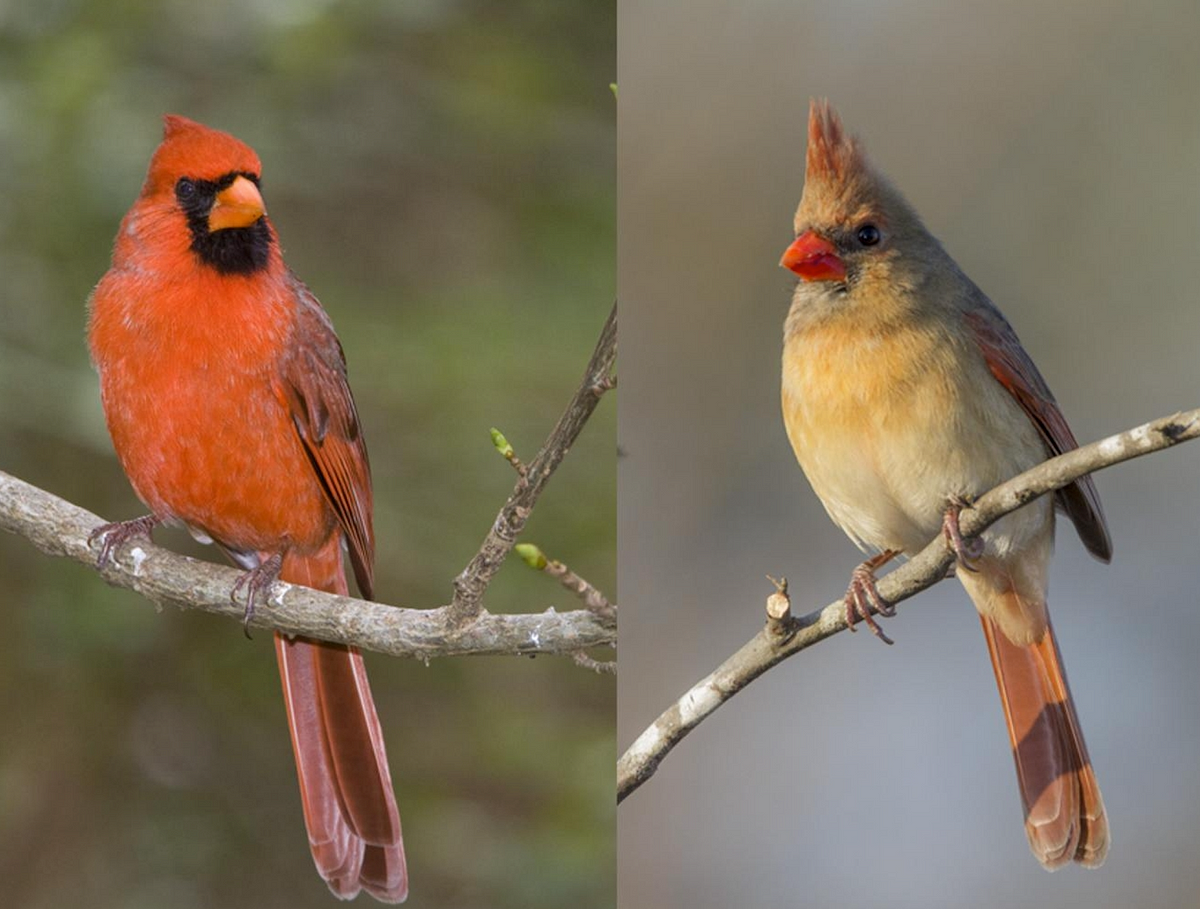Sexual dimorphism — physical differences between the sexes of the same species — is a widespread and fascinating, yet mysterious, natural phenomenon. It even captivated Charles Darwin and inspired him to propose the concept of sexual selection more than 150 years ago in his seminal work, On the Origin of Species by Means of Natural Selection, and to extensively elaborate on it in his definitive work, The Descent of Man, and Selection in Relation to Sex, published in 1871. Yet despite Darwin’s early interest in this phenomenon, we still have much to learn about how sexual dimorphism arises from nearly identical genomes.
One of the most conspicuous forms of sexual dimorphism are the different colors or color patterns shown by males and females within a species, a trait known as sexual dichromatism. This trait is particularly common amongst birds, and can be so dramatic in some species that males and females were sometimes classified into separate species (more here).
The evidence suggests that sexual dichromatism evolved rapidly in birds (ref) and generally results from differences in carotenoid-based coloration (ref). Carotenoid pigments are the basis for most red, orange and yellow colors in the natural world (more here). These pigment molecules are primarily manufactured by bacteria, fungi and plants, and are obtained by most animals in their diet.
Sexual dichromatism is usually thought to have evolved through female choice and is perceived to be an honest signal of an individual male’s genetic quality. However, sexual dichromatism can also result from natural selection for cryptic coloration in females. Thus, sexual dichromatism arises from both sexual and natural selection (ref). But currently, the genetic and molecular mechanisms that control differences in male and female coloration remain largely unknown, and there are few candidate genes known to be involved.
Mosaic canaries are strongly sexually dichromatic
In an effort to understand how sexual dichromatism is produced from a nearly identical set of genes, evolutionary biologist Małgorzata Gazda and an international team of scientists investigated this phenomenon by studying sexual differences in the distribution of carotenoid-based red plumage in a common canary breed, the mosaic canary.
“I was interested in birds since school times”, said the study’s lead author, Dr Gazda, who was working on her PhD at the University of Porto when she conducted this research. “I did couple of projects on birds and then started my PhD working on canaries to look at genetic basis of traits, including the puzzle of mosaic canaries.”
#evolution #sex-differences #ornithology #science #colors #data science
